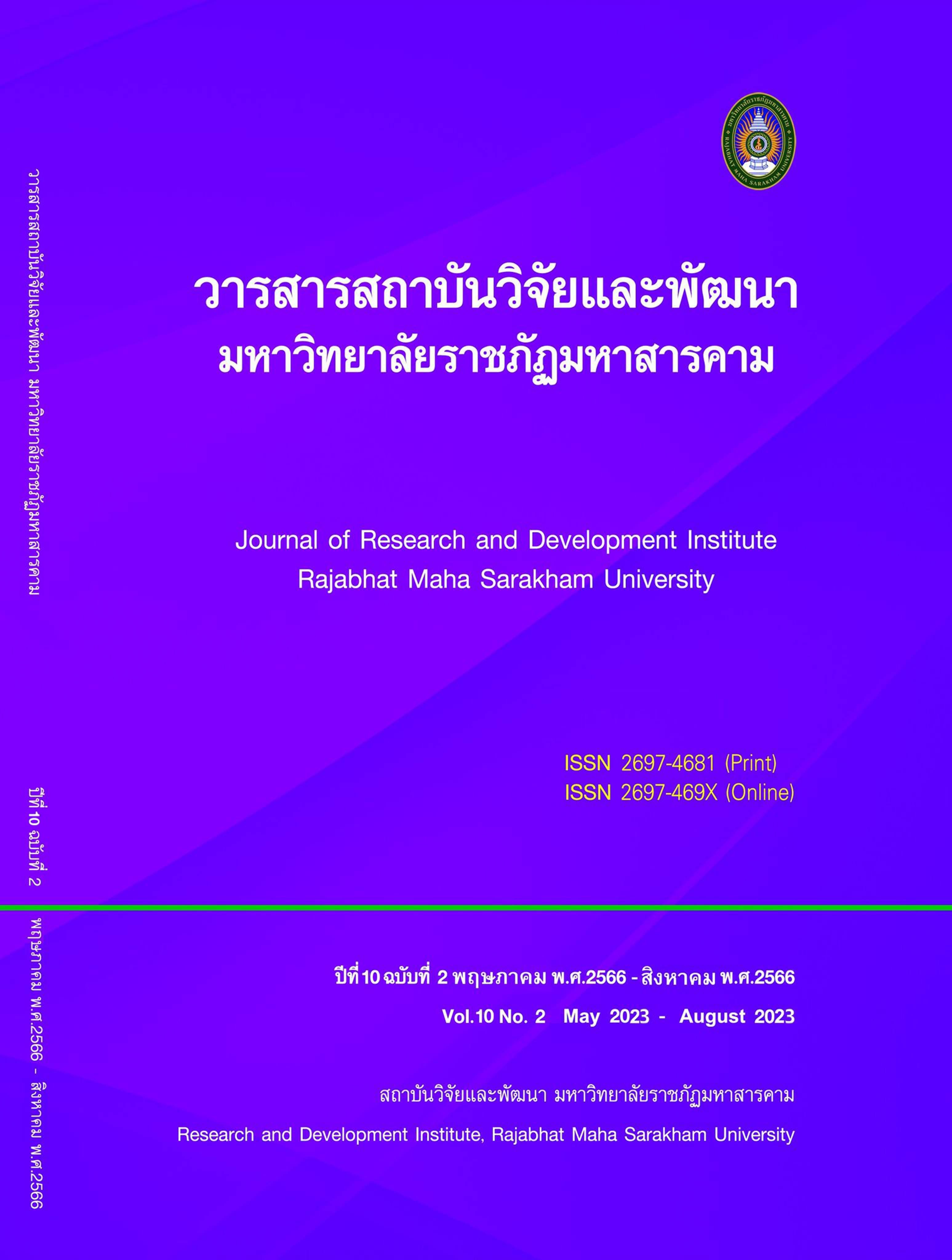Development of Organizing for Learning to Develop Critical Reading Skill In the Thai Language Learning Strand for Grade 10 Students
Keywords:
critical reading, model of organizing for learning, critical reading skillAbstract
Abstract
This research aimed to develop of organizing for learning to develop critical reading skill In the Thai Language Learning Strand for grade 10 Students. The research employed the research and development methodology; it comprised 4 steps: 1) the study of baseline data for development of the model of organizing for learning, 2) the design and development of the model of organizing for learning, 3) the tryout of the model of organizing for learning, and 4) confirmation on the effectiveness of the implementation of the model of organizing for learning. The research design was of the one group pretest posttest design. The experimental group consisted of 38 grade 10 students of Sarakhampittayakhom School in the first semester of the academic year 2020, obtained through cluster random sampling. The research instruments were: 1) the CHULEE MODEL of organizing for learning, 2) the handbook of the model, 3) plans of organizing for learning, 4) a critical reading ability test, 5) a questionnaire inquiring students’ satisfaction with the model of organizing for learning. The analysis of data employed the mean, standard deviation, and t-test (dependent samples) for hypothesis testing.
The results were as follows: 1) The state of problems of learning and developing critical reading skill, according to the students’ opinion, on the whole, was at a high level, while for the teachers in the Thai Language Learning Strand, on the whole, the problem was at a moderate level. Also, the need for development of the model of organizing for learning of the students, on the whole, was at a high level; 2) The CHULEE MODEL of organizing for learning to develop critical reading skill In the Thai Language Learning Strand for grade 10 Students had 6 steps of organizing learning activities. Step 1 C (Creative Interest): creating creative interest; Step 2 H (Habit Sufficiency): creating the habit of sufficiency; Step 3 U (Understanding): presenting knowledge and understanding; Step 4 L (Like to Learn): studying with pleasure; Step 5 E (Evaluation): evaluating; and Step 6 E (Exchange of Idea): exchanging ideas and finding conclusions for more learning; 3) The implementation of the CHULEE MODEL of organizing for learning to develop critical reading skill for grade 10 Students of Sarakhampittayakhom School yielded the model efficiency of 84.99/82.59 and the post-learning critical reading skill was higher than the pre-learning, with statistical significance at the level of .01. Moreover, the students’ satisfaction was at a high level, and 4) The effectiveness of the model was confirmed by extending the use of the model to the extended group and it was found that the average post-learning critical reading score of the extended group was higher than the pre-learning, with statistical significance at the level of .01. The students in the extended group had their satisfaction with the CHULEE MODEL of organizing for learning at a highest level.
References
Chancharoen, S. (2008). The development of a learning management plan for Thai language learning subjects with a cooperative learning method, STAD model, using skill exercises to develop critical reading ability of grade 1 students. Secondary school year 3. Independent study. Mahasarakham : Mahasarakham University.
Homfung, C. (2014). Development of Thai Literature Teaching Model by Applying the Four Noble Truths to Promote Critical Reading Ability and Creative Problem Solving of Graduate Students. Bangkok : Silpakorn University.
Intanam, M. (2011). The development of learning activity management model emphasizing on reading. Analytical analysis for grade 5. Mahasarakham : Mahasarakham University.
Joyce, Weil, and Calhoun. (2009). Models of teaching. New York: Pearson education, Inc.
Khaemmanee, T. (2014). Thinking Science. Bangkok: Institute for Academic Quality Development.
Kodi, T. (2011). The development of critical reading abilities. The inductive learning method of John Stuart Mill for Mathayomsuksa 1 students. Bangkok: Silpakorn University.
Makanong, A. (2011). Mathematical Skills and Processes: Development for Development. (2nd ed). Bangkok: Chulalongkorn University.
Phangarm, P. (2006). The Development of Critical Reading Skill Enhancement Exercises. Thai language learning group Grade 3. Ubon Ratchathani : Ubon Ratchathani University.
Phattiyathanee, S. (2010). Educational Measurement. (6th ed). Kalasin :Coordinate printing.
Pikunthong, J. (2016). The Development of a Learning Management Model to Enhance Critical Reading Competence Using Metacognition Strategies for High School Students. Mahasarakham : Mahasarakham University.
Prangsuwan, P. (2007). A Study of Critical Reading Ability in Thai and Satisfaction with Scientific Teaching Methods of Prathom Suksa 6 Students. Bangkok: Naresuan University.
Srisaard, B. (2015). Development of teaching. Bangkok: Sureewiriyasasan.
Wongthip, K. (2016). The development of teaching and learning model based on the theory of practical speech. To enhance the reading ability of graduate students. Bangkok : Silpakorn University.
Downloads
Published
How to Cite
Issue
Section
License
Copyright (c) 2023 ชุลีพร พินิจพล

This work is licensed under a Creative Commons Attribution-NonCommercial-NoDerivatives 4.0 International License.
Articles that are published are copyrighted by the authors of the articles







